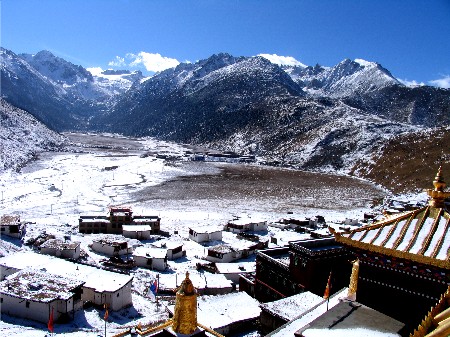Shri Singha Shedra: Difference between revisions
Jump to navigation
Jump to search
No edit summary |
|||
| Line 7: | Line 7: | ||
==Further Reading== | ==Further Reading== | ||
*Dreyfus, Georges B. J. | *[[Dreyfus, Georges B.J.]], ''The Sound of Two Hands Clapping: The Education of a Tibetan Buddhist Monk''. Berkeley: University of California Press, 2003 | ||
*Dreyfus, Georges. “Where Do Commentarial Schools Come From? Reflections on the History of Tibetan Scholasticism” in ''Journal of the International Association of Buddhist Studies'' (Vol. 28, No. 2), 2005, pp. 273 – 297 | *Dreyfus, Georges. “Where Do Commentarial Schools Come From? Reflections on the History of Tibetan Scholasticism” in ''Journal of the International Association of Buddhist Studies'' (Vol. 28, No. 2), 2005, pp. 273 – 297 | ||
Revision as of 13:33, 4 October 2015

Shri Singha Shedra (Wyl. shrI simha bshad grwa) — the famous shedra at Dzogchen Monastery founded by Gyalsé Shenpen Thayé in the nineteenth century[1], which produced many of the finest scholars in Tibet. Among the great masters who studied and/or taught at the shedra were Khenpo Pema Vajra, Mipham Rinpoche, Khenpo Shenga, Khenpo Ngakchung, Khenpo Kunpal, Pöpa Tulku and Khenpo Tsöndrü.
Notes
- ↑ Dreyfus (2005) p. 288 gives the year as 1848
Further Reading
- Dreyfus, Georges B.J., The Sound of Two Hands Clapping: The Education of a Tibetan Buddhist Monk. Berkeley: University of California Press, 2003
- Dreyfus, Georges. “Where Do Commentarial Schools Come From? Reflections on the History of Tibetan Scholasticism” in Journal of the International Association of Buddhist Studies (Vol. 28, No. 2), 2005, pp. 273 – 297